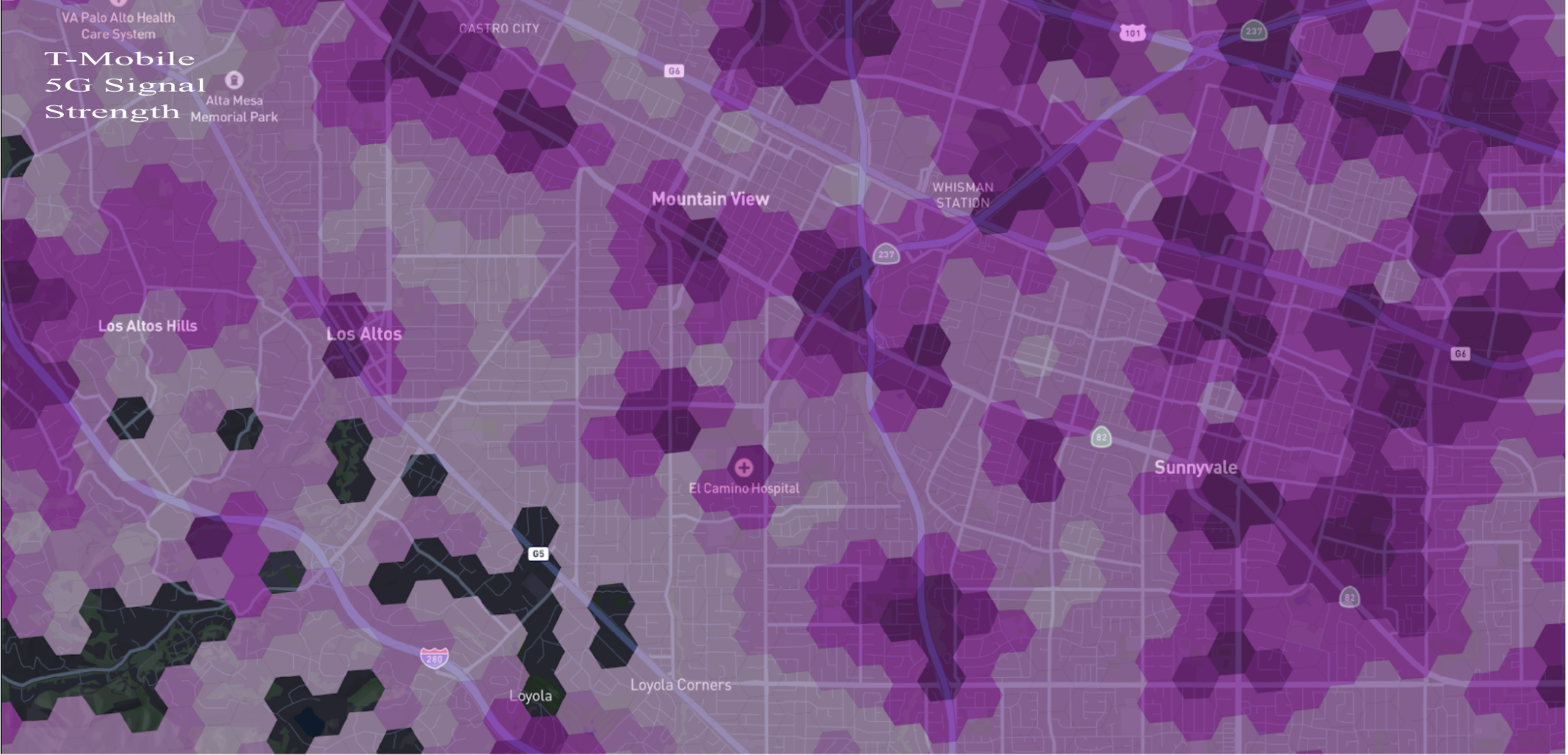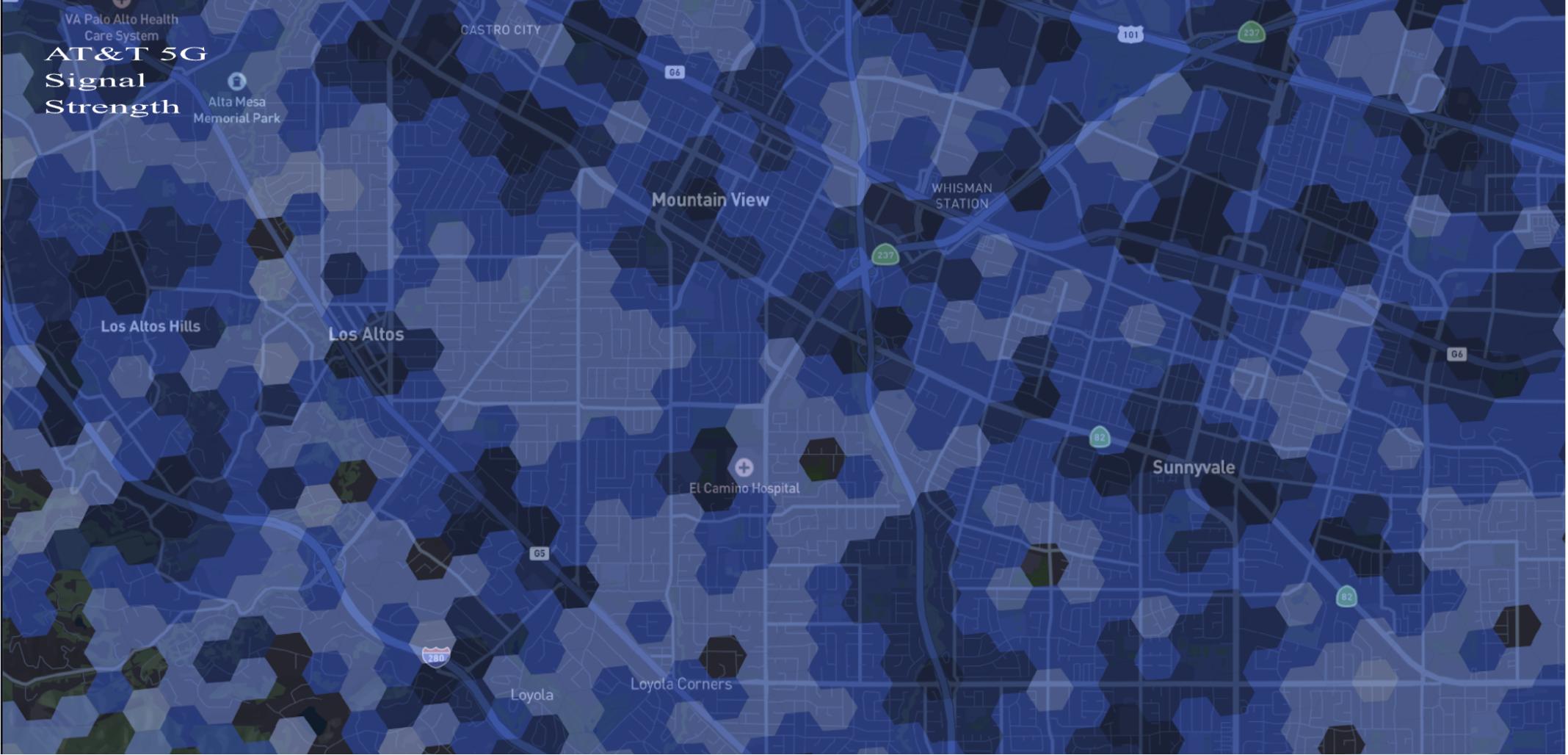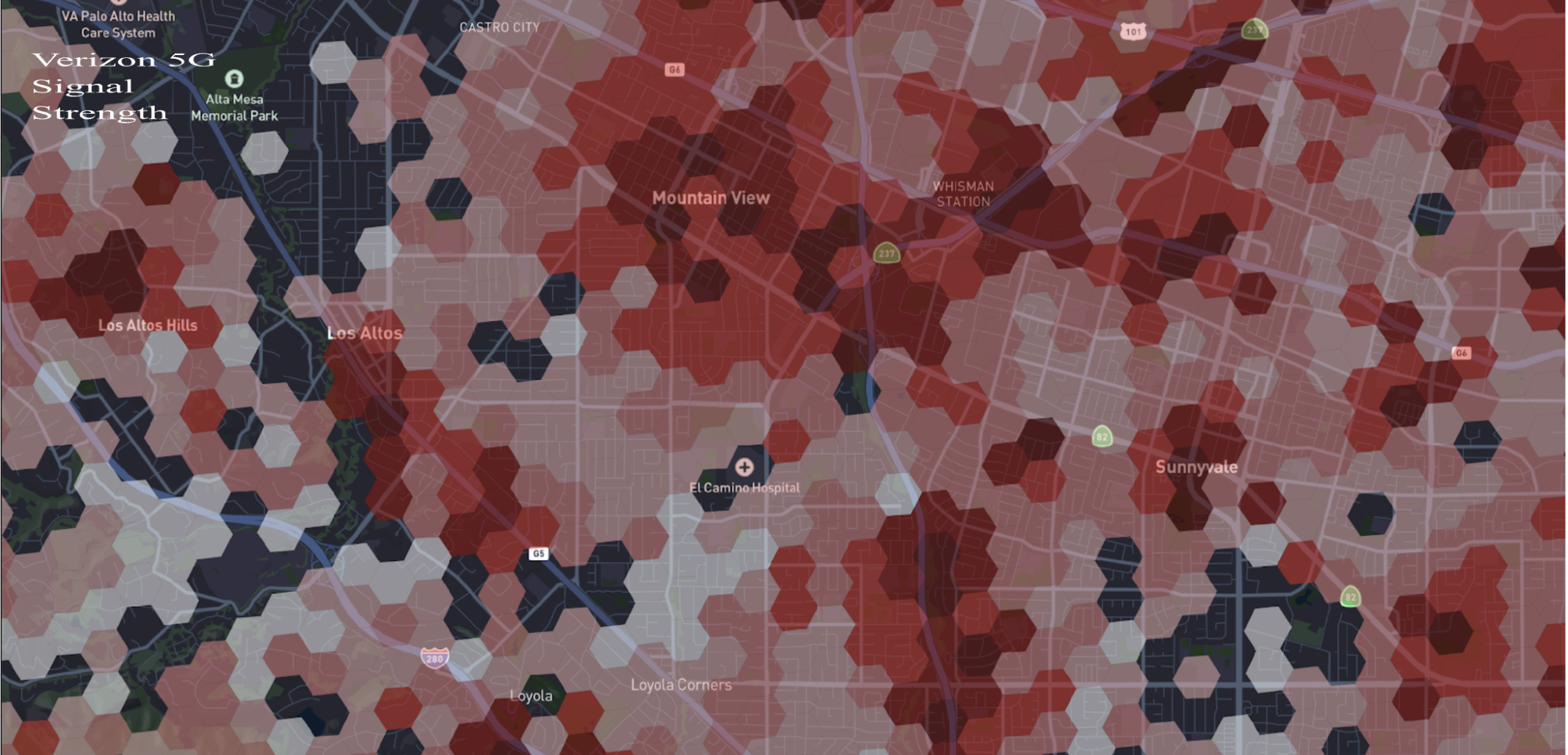Thanks for the question! If by "basically the same" you mean all networks have coverage gaps—you're right! I think we've all been there—two bars but you can't make a call. Your friend right next to you? Crystal clear connection. Coverage quality varies wildly by carrier, even within the same city block or building.
But if by "basically the same" you mean carrier choice doesn't matter—it's time to think again.
The Signal Strength Maps Tell the Story
To illustrate, let’s dig in by looking at signal strength maps for each of the major wireless carriers in Silicon Valley. A few tips:
- Signal strength is the major determinant of Quality of Service (QoS)
- Hover over the image to see it in color
- Look for black hexagons: black represents no signal
- Look for darker shading: the darker the shading, the stronger signal
- Compare maps: each operator has spots where it has the best coverage, the worst coverage, and no coverage at all!
T-Mobile 5G Signal Strength, Silicon Valley

AT&T 5G Signal Strength, Silicon Valley

Verizon 5G Signal Strength, Silicon Valley

What Causes Signal Strength Variance?
Any of the following reasons may cause signal strength and the resulting Quality of Service (QoS) to vary greatly between carriers at a given location.
- Radio frequency each carrier owns different frequency bands. Lower bands travel farther and through walls better; higher bands are faster but fade quicker.
- Tower placement often differs between carriers. Although many macro sites, i.e., towers, are indeed shared, small cell sites are typically unique per carrier. A closer site translates to a stronger signal.
- Network capacity or “lanes” (radios, antennas, backhaul) feeding it may be insufficient.
- Crowding matters. At busy times, popular networks slow as many users share the same cell.
- Phones and settings vary. Your device may not support a carrier’s best bands or features (like certain 5G modes), or it might be deprioritized on some plans.
- Buildings and terrain block signals differently—concrete, metal, hills, and trees all absorb energy.
- Carrier core network and internet connections affect latency and reliability, as do maintenance, outages, and roaming agreements.
Together, these factors add up to differing mobile QoS per carrier at a single location or within a city block, and these differences are further accentuated when comparing outdoor to indoor performance.
How Does Pronto Deliver More High-Reliability Mobile?
Pronto solves this by combining all the major networks (and many regional ones, too) into one service for the most comprehensive coverage. We continuously monitor these networks and make intelligent decisions to automatically switch you to the best performing network in real-time, wherever you are nationwide.
The result? Unbeatable mobile QoS nationwide.
Ready to see how Pronto performs in your area? Try Pronto free for 15 days—no risk, no obligation.